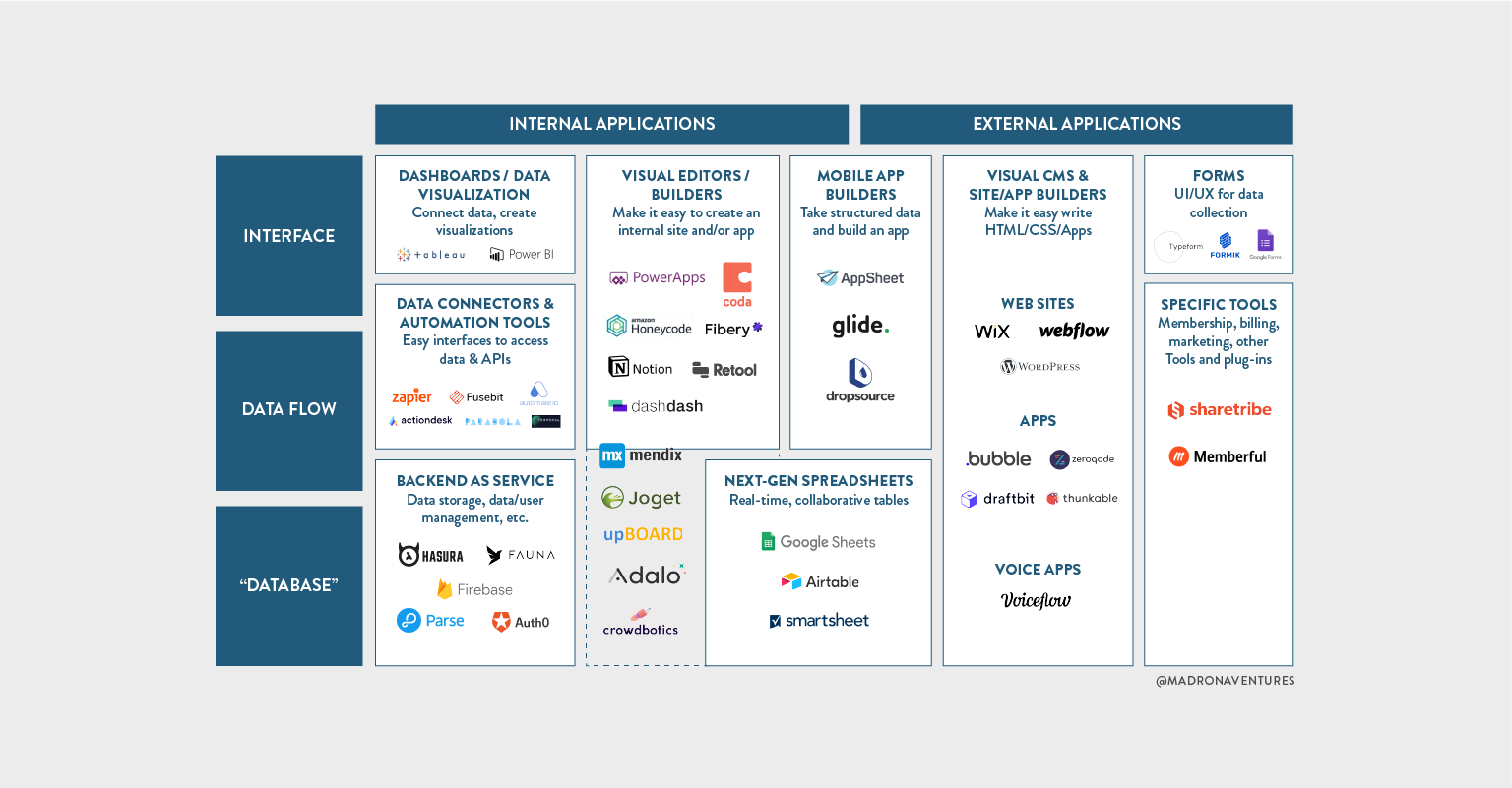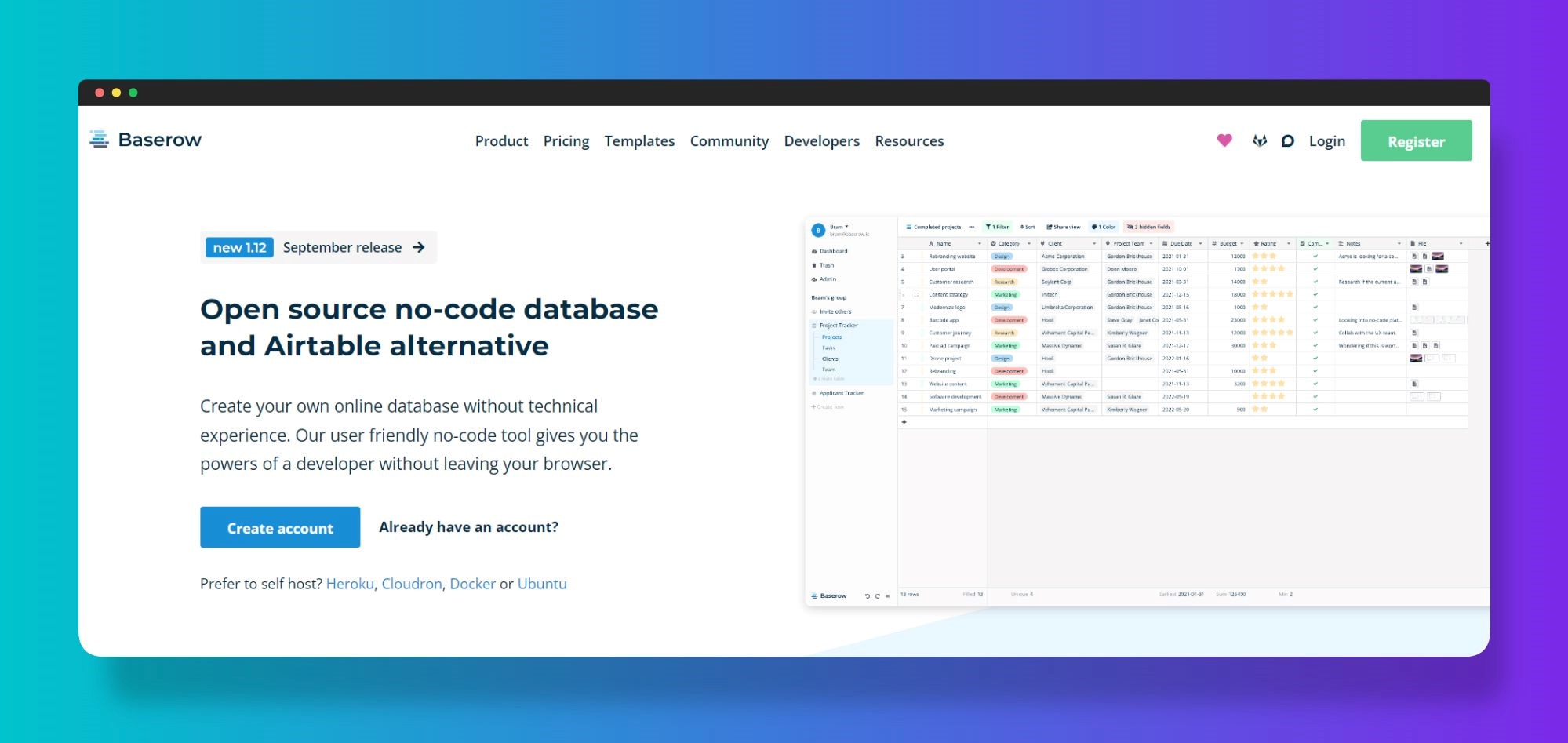Open the Power of No-Code for Open System Data Source Creation
Wiki Article
A Comprehensive Guide to Applying Scalable Data Sources Without the Need for Coding Competence
In the modern landscape of information monitoring, the capacity to implement scalable databases without coding knowledge is ending up being significantly crucial for companies of all dimensions. This overview intends to brighten the procedure, concentrating on straightforward devices and instinctive user interfaces that demystify database configuration. By analyzing crucial attributes, effective strategies for implementation, and best methods for recurring monitoring, we will attend to just how even non-technical individuals can with confidence browse this facility terrain. What are the critical components that can truly equip these customers to take advantage of scalable data sources successfully? The solutions may redefine your method to information administration.Understanding Scalable Data Sources
In the realm of modern data monitoring, scalable databases have become a crucial remedy for companies seeking to handle raising quantities of info effectively. These databases are designed to accommodate development by permitting the smooth addition of resources, whether through horizontal scaling (including much more equipments) or vertical scaling (updating existing devices) This adaptability is vital in today's busy digital landscape, where data is created at an unmatched price.Scalable databases commonly utilize dispersed architectures, which make it possible for data to be spread throughout multiple nodes. This distribution not only boosts performance yet also offers redundancy, making sure information schedule even in case of hardware failures. Scalability can be a crucial aspect for numerous applications, consisting of e-commerce platforms, social networks networks, and large information analytics, where user need can fluctuate substantially.
In addition, scalable databases frequently include durable information uniformity models that balance performance and dependability. Organizations has to consider their particular demands, such as read and create rates, information honesty, and fault tolerance when picking a scalable database option. Eventually, recognizing the underlying principles of scalable data sources is essential for companies intending to grow in a significantly data-driven world.
Secret Attributes to Seek
When evaluating scalable data sources, numerous key functions are critical to ensuring ideal efficiency and reliability. Most importantly, consider the style of the data source. A distributed design can boost scalability by permitting data to be stored across several nodes, assisting in smooth data accessibility and handling as demand increases.One more important attribute is data partitioning, which makes it possible for reliable administration of big datasets by splitting them into smaller, more manageable items (no-code). This technique not just boosts performance but additionally simplifies source allowance
Additionally, seek robust duplication abilities. This feature makes sure data redundancy and high schedule, reducing downtime throughout maintenance or unanticipated failures.
Performance tracking tools are likewise crucial, as they give real-time understandings right into system health and functional performance, enabling for prompt modifications to maintain ideal efficiency.

User-Friendly Database Devices
Simpleness is an important aspect in the design of straightforward data source devices, as it improves access for customers with differing levels of technical competence. no-code. These devices prioritize user-friendly interfaces, allowing users to create, take care of, and question data sources without calling for substantial programming expertiseSecret features normally include drag-and-drop capability, visual information modeling, and pre-built themes that enhance the setup procedure. Such devices frequently supply led tutorials or onboarding procedures that assist in user engagement and minimize the knowing contour. Furthermore, smooth integration with preferred information sources and services makes certain that individuals can conveniently import and export data, better simplifying operations.

In addition, durable support and community resources, such as discussion forums and paperwork, boost the user experience by supplying assistance when required. Generally, easy to use data source devices empower companies to harness the power of scalable databases, making information administration accessible to every person included.
Step-by-Step Implementation Guide
How can companies efficiently implement scalable data sources to meet their expanding data requirements? The process starts with identifying details data needs, including the quantity, variety, and rate of data that will certainly be processed. Next off, organizations should evaluate easy to use database devices that provide scalability features, such as cloud-based options or handled database solutions.When the best tool is selected, the following action includes configuring the database environment. This consists of establishing up instances, defining customer visit authorizations, and developing information structures that straighten with company goals. Organizations needs to after that move existing information right into the brand-new system, making certain data honesty and very little disruption to procedures.
Post-migration, carrying out complete testing is important; this consists of efficiency screening under various load problems to make sure the system can deal with future development - no-code. Furthermore, it is essential to train staff on the database management interface to facilitate smooth use
Best Practices for Administration
Efficient monitoring of scalable data sources needs a tactical approach that focuses on recurring monitoring and optimization. To attain this, companies must apply durable surveillance devices that give real-time description understandings right into data source efficiency metrics, such as question feedback times, source application, and transaction throughput. Consistently examining these metrics can aid recognize traffic jams and locations for improvement.
Normal backups and catastrophe healing strategies are important to secure information honesty and availability. Establishing a routine for examining these back-ups will certainly guarantee a trustworthy recuperation process in case of an unforeseen failure.
In addition, efficiency adjusting must be a continuous procedure. Adjusting indexing approaches, optimizing questions, and scaling resourcesâEUR" whether vertically or horizontallyâEUR" will certainly help preserve optimal performance as usage demands advance.
Finally, fostering a culture of knowledge sharing amongst staff member will make it possible for continual knowing and adjustment, guaranteeing that the monitoring of scalable databases stays efficient and reliable over time.
Final Thought
To conclude, the application of scalable data sources can be properly achieved without coding knowledge with the application of easy to use devices and instinctive interfaces. By adhering to the detailed strategies for setup, information movement, and performance testing, people can navigate the complexities of data source management with simplicity. Emphasizing finest techniques for ongoing upkeep and collaboration further improves the capacity to manage scalable data sources successfully in a quickly evolving data-driven environment.In the modern landscape of information monitoring, the capacity to implement scalable databases without coding proficiency is ending up being significantly important for companies of all dimensions.In the world of modern data administration, scalable data sources have emerged as a critical option for companies seeking to deal with enhancing volumes of information efficiently.Furthermore, scalable databases usually include durable data uniformity versions that stabilize performance and reliability.Just how can companies successfully carry out scalable databases to meet their expanding information requirements? Next off, reference organizations ought to evaluate easy to use database devices that offer scalability features, such as cloud-based solutions or handled data source services.
Report this wiki page